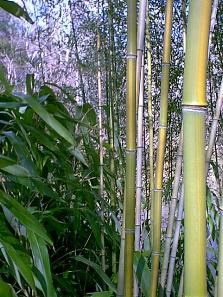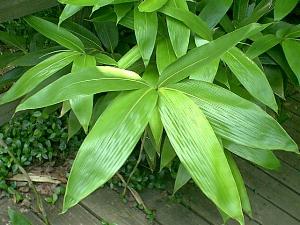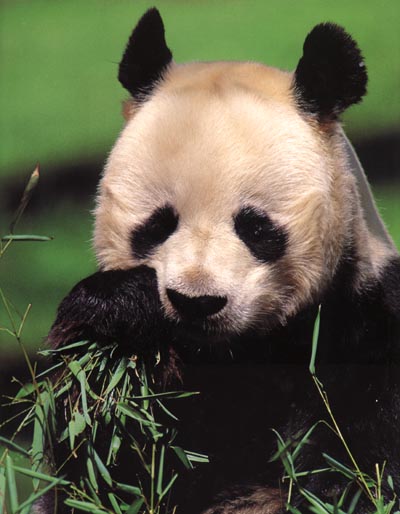by Mindy Rath
taken
by James Warwick  Giant Panda with Bamboo
Giant Panda with Bamboo
by Mindy Rath
taken
by James Warwick  Giant Panda with Bamboo
Giant Panda with Bamboo
The main
ingredient in a panda's diet
is bamboo,
but that is another story.
Bamboo is a member of the grass family, scientifically Gramineae (Poaceae). The woody stalks or culms are what distinguishes it from other grasses. There are about 1200 known species. These species vary from giants, which can reach a height of sixty to ninety feet tall with an eight inch or more diameter to dwarfs that stand a foot tall, with all sizes in between. Most bamboo is found in subtropical or tropical habitats; however, many have adopted to cooler climates, making bamboo a widespread and diverse plant.
Canbreaks, a type of bamboo, was once native to South East United States. Today most plants have migrated from China or Japan. There around 200 species in North America. The Lucky Bamboo that is sold in many stores now days is not included in this list. The Lucky Bamboo (Dracaena sanderana) is not a true bamboo and usually not a true grass.
Identification
is easily done by observing flowers, but flowering for bamboo takes place
every few years to 120 years. In the spring looking at the sheath
color, size, shape and the delicate parts can help determine different
species. Note that the process is not easily done.


growing bamboo
leaves of bamboo
The flowers of bamboo serve only one purpose. That purpose is to produce seeds. They put a tremendous amount of energy into seed production that plant becomes exahusted usually dies afterwards. The large number of seeds formed insure that the plant shall live on, with little fear that all the seeds shall be eaten by pray. In addtion to seeds, bamboo also reproduces vegetatively by rhizomes. Rhizomes are horizontal underground stems, that can be compressed and fleshy like Iris's, or, slender with elongated internodes such as turf grass.
Bamboo has many uses in today's world. It is used to make furniture, weapons, tools, paper, hats and baskets (think of straw hats and wicker baskets). Tabsheer a secretion of some bamboo is sold as a prescription for asthma. On a larger scale the stems are used to make houses and fences. Even cables that support bridges such as the bridge that crosses the Min River in Sichuan. These lager scale projects are having success in areas with tidal waves because they do not collapse as easily as steel. This is not a new practive, bamboo has been used in many area for a very long time.
With all of these uses it puts the panda's habitat in trouble. The endangered bear-cat otherwise known as the giant panda's main diet consists of bamboo (Gelidocalamus fangianus). Panda's eat around 33-66 lbs of bamboo per day. They are unable to digest cellulose, mainly what bamboo consists of. That is the reason why panda's eat so much. But that is still another story.
![]()
bamboo shoot
References

Panda eating bamboo